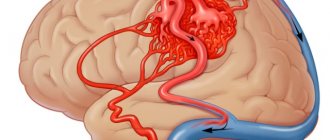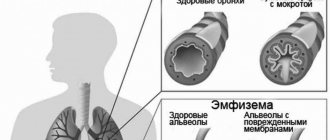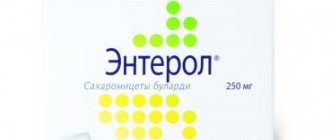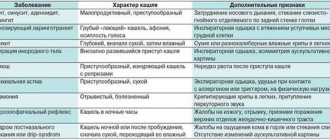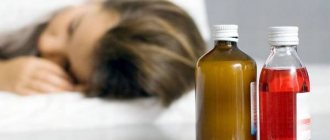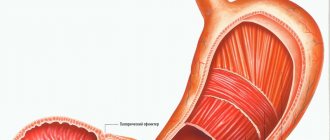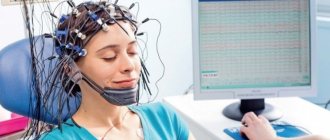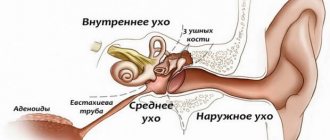Cerebral circulation disorders can be caused by various functional and organic lesions of blood vessels, which are caused by injuries or systemic diseases of the body. Blood clots, atherosclerosis, intoxication, past infectious diseases, hypertension, stress, osteochondrosis, vascular spasms and mechanical compression - all these disorders can significantly destabilize the blood supply to the brain and cause a disruption in its normal functioning, which regulates all human life processes.
The pharmaceutical industry offers a wide selection of drugs to improve cerebral circulation. How can you not get confused and know what type of medicine your doctor prescribed for you? This is what this article is about.
Main types of drugs
Prevention and treatment of cerebral circulatory disorders should not be delayed when the first symptoms appear, since the progression of such pathologies can lead to serious consequences (strokes, senile dementia, etc.) and even death. A wide range of drugs are used for these purposes:
- anticoagulants and antiplatelet agents;
- vasodilators;
- nootropic drugs.
Drawing up a regimen for the treatment and prevention of cerebrovascular accidents is possible after a detailed examination of the patient and can only be carried out by a doctor. Self-medication in such situations is unacceptable and can lead to various serious consequences. In our article we will only introduce you to the most popular means for normalizing cerebral circulation and systematize them.
Causes of deterioration of cerebral circulation and memory
Cerebral circulation may deteriorate for the following reasons:
- constant increase in blood pressure;
- strong physical activity;
- stressful situations;
- heart disease;
- migraine, including complicated form;
- thin vessels;
- traumatic brain injury (TBI);
- hereditary factor;
- overweight or obesity;
- alcohol abuse and smoking;
- taking certain groups of medications (hormonal);
- long-term diet;
- atherosclerosis.
Problems with blood circulation in the brain are diagnosed in both women and men. But it all depends on the age category. Older people are more susceptible to the disease. This is often associated with hypertension, high cholesterol, and osteochondrosis. If you do not pay attention to the condition, there may be more serious consequences - a stroke, a tumor in the brain.
It is very important to recognize the disorder at an early stage. With timely treatment, the likelihood of developing complications can be reduced and concomitant diseases will not appear.
Each age category has its own problems that can lead to cerebrovascular accidents:
- Early age category . This item includes oxygen starvation in the fetus while in the womb or by caesarean section. Such children need rehabilitation. This takes about 3 years. If the situation is additionally complicated by diseases (cerebral palsy, epilepsy), the recovery period can last throughout life.
- Preschoolers or teenagers . This category has an increased load, the brain works harder. The body begins to adapt to greater work. An additional cause of poor blood circulation is hormonal imbalance.
- Able-bodied person . He may be bothered by headaches due to diseases that cause compression of blood vessels, so nutrients do not reach the brain. Additionally, circulatory disorders in the main organ cause osteochondrosis, tumor, and thrombosis.
- Elderly age category . Blood circulation is impaired due to atherosclerosis or neoplasm.
Drugs for vasodilation
The action of vasodilators is aimed at increasing blood flow to brain cells and improving its blood supply. This pharmacological action helps prevent oxygen starvation and nutritional deficiencies. Also, these drugs help improve energy metabolism in brain cells and normalize its functions.
Calcium antagonists
Drugs of this group have long been used to improve cerebral circulation, and the modern pharmacological industry is already developing the third generation of these drugs. Calcium antagonists promote dilation of the arteries (by relaxing their muscle wall) and do not affect the tone of the venous vessels. Once their effects begin, cerebral blood flow increases and sufficient oxygen and nutrients are delivered to the brain.
These drugs can have a systemic effect on the body and should be taken only after an examination has been carried out to determine the advisability of their use. Their dosage and duration of administration are strictly individual and can only be prescribed by a doctor.
First generation calcium antagonists:
- dihydropyridines – Nifedipine, Odalate, Cardafen, Cordipine;
- phenylalkylamines – Finoptin, Verapamil, Kalan, Isoptin;
- benzothiazapines – Diazem, Diltiazem, Dilacor.
After the advent of second generation calcium antagonists, their spectrum expanded significantly:
- dihydropyridines – Nifedipine GITS, Nicardipine SR, Felodipine SR, Isradipine, Felodipine, Plendil, Nimodipine, Nasoldipine;
- phenylalkylamines – Verapamil SR, Anipamil, Galopamine, Tiapamil;
- benzothiazapines – Diltiazem SR, Clentiazem.
III generation calcium antagonists:
- dihydropyridines – Norvasc, Amlodipine, Stamlo.
Vasodilators
An increase in blood flow, improvement in oxygenation and nutrition of brain cells occurs due to the expansion of the lumen of arterial vessels. This allows you to increase the volume of blood entering the brain. This action can prevent the development of hypoxia as well as nutritional deficiencies.
This group of vasodilator drugs includes:
- Calcium antagonists - vasodilation occurs by reducing the amount of calcium entering the smooth muscle cell. Thus, the work of the ion pump is disrupted and the muscle relaxes, which leads to dilatation of the vessel. You must be careful and use such medications only under the supervision of a specialist, since calcium antagonists have a systemic effect. The most common representatives: Nifedipine, Diazepam, Finoptin, Odalate, Verapamil.
- Adrenergic blockers - representatives of this group block the conduction of nerve impulses to the smooth muscles of the vessel, which leads to a sharp increase in the lumen of the vessel. A feature of adrenergic blockers is the ability to expand not only arterioles, but also large veins. This effectively lowers blood pressure, which helps fight hypertension. Common representatives of vasodilators: Sermion, Prazosin, Cardura, Celiprol.
Preparations based on herbal ingredients
These drugs are used for the treatment and prevention of cerebrovascular accidents and have a minimal number of contraindications. Some of them are available without a doctor's prescription and can be taken independently after carefully reading the instructions included with the drug.
The main active component of these medicines are alkaloids from medicinal plants such as periwinkle and ginkgo biloba.
Preparations based on vinca alkaloids
Vinca alkaloid can have an antispasmodic effect on blood vessels, normalize metabolism in brain cells, prevent the formation of blood clots and improve cerebral circulation.
The most popular preparations based on periwinkle are:
Vinpocetine;
- Vero-Vinpocetine;
- Bravinton;
- Cavinton;
- Telektol.
Self-administration of Cavinton and Vinpocetine without prior consultation with a doctor is unacceptable, since the duration of their use and the most optimal route of administration can only be determined after examining the patient.
Preparations based on ginkgo biloba extract
These drugs have a complex effect on cerebral circulation: eliminate vascular spasm, increase microcirculation, improve the permeability of the vascular wall, eliminate swelling of brain tissue, protect the walls of blood vessels from the effects of free radicals and strengthen them.
The most popular preparations based on ginkgo biloba are:
- Gingium;
- Vobilon;
- Tanakan;
- Ginkor Fort;
- Bilobil;
- Ginkgo Biloba S;
- Doppelgerz Ginkgo Biloba +;
- Ginkum;
- Memory et al.
The course of treatment with such drugs based on ginkgo biloba alkaloids is long and lasts at least three months. While taking one of the above medications, you should not take blood thinners (aspirin, etc.), since this combination can significantly increase the risk of hemorrhage in the brain tissue. The first signs of improvement in cerebral circulation begin to appear within a month after the start of therapy.
Vasodilator medications that improve cerebral circulation
Vasodilators are a group of drugs with different mechanisms of action. Their main disadvantage is their indiscriminate action, due to which they dilate not only the arteries of the brain, but also other vessels, often causing a drop in blood pressure, at which cerebral blood flow worsens even more.
This moment is especially unpleasant for older people, whose arteries are severely affected by atherosclerosis. They often experience orthostatic hypotension (darkening in the eyes when standing up suddenly) and the risk of developing ischemic strokes against the background of vasodilators.
Antispasmodics
Antispasmodics relax the smooth muscles of the vascular wall and expand the lumen of blood vessels. These are the mildest and relatively safe drugs, these include tablets and injections:
- No-shpa (60 tablets 220 RUR)
- Drotaverine hydrochloride (100 tablets, 50 rub.)
The drugs do not work well on vessels affected by atherosclerosis. They can also steal from diseased areas of the brain, redistributing blood flow in favor of healthy areas due to better preservation of blood vessels there. Therefore, this group of drugs is little used in elderly patients, for whom drugs of the next class are preferable.
Calcium channel blockers
Calcium channel blockers dilate cerebral vessels without compromising the rest of the blood circulation. This mainly improves microcirculation. The main side effect of these drugs is a drop in blood pressure.
These include: Adalat, Cordafen, Brainal, Norvax, Arifon, Grindeke, Diacordin, Cordaflex, Diacordin, Cortiazem, Lacipil, Logimax, Nafadil, Nemotan, Nimotop, Plendil, Stamlo, Foridon, Cinnarizine, Tsinedil, Nifecard, Cinnasan.
Nimodipine (Nimotop)Application: Nimodipine is used for the prevention and treatment of various disorders of the blood supply to the brain. Nimodipine is available in tablets weighing 30 milligrams. One package contains twenty, fifty or one hundred tablets. It can also be purchased as a 0.02% solution for infusion (in plastic bags or 50-milliliter bottles).
Side effects: the risk of side effects of the drug is higher when administered intravenously. Blood pressure may drop sharply. When taking pills, digestive disorders such as nausea and diarrhea are common. Contraindications: pregnancy and simultaneous use of infusions and tablets of this drug. It is also necessary to be careful with intracranial hypertension and renal failure. Price: 100 tablets 1100 rub. |
Cinnarizine (Stugeron)Produced in tablets of 25 mg (packs of 30 or 50 tablets) used for a course of administration (from three weeks to six months) 1-2 tablets three times a day. Indications and contraindications are similar to nimodipine. Today, the drug has been greatly replaced by vinpocetine. Price: Cinnarizine 50 pcs. 30-70 rubles, Stugeron 50 pcs. 150-200 rub. |
Vinpocetine (Cavinton)This is a preparation made from plant materials (periwinkle). The drug combines the properties of a vasodilator and a thrombus-limiting agent. Vinpocetine can also improve metabolism in brain tissue and make it more resistant to oxygen starvation. Application: 5 mg tablets are taken one three times a day after meals. Solutions are administered intravenously. Before the end of treatment, the dose of the drug is gradually reduced until complete withdrawal. Contraindications: not recommended for combined use with heparin (due to the risk of bleeding). Also, in severe forms of coronary artery disease and arrhythmias, parenteral administration of the drug is prohibited. Since the drug crosses the placenta and enters breast milk, it is not recommended for pregnant and lactating women. Free from the phenomenon of “robbery”. Analogs of Vinpocetine: Vero-Vinpocetine, Bravinton, Vincetin, Vinpoton, Telektol, Cavinton forte. Price: Cavinton 5 mg. 50 pcs. 250 rub., Vinpocetine 5 mg. 50 pcs. 40-80 rub., Korsavin 5 mg. 50 pcs. 70-90 rub. |
The largest international organization in evidence-based medicine, the Cochrane International Collaboration, does not recognize the effectiveness of Cavinton and does not include it in its Review, which allows us to talk about the proven effect of the drug. Since no double-blind, placebo-controlled studies have been conducted on it.
However, domestic neurologists and vascular surgeons have repeatedly published the results of work with this drug (including improvement in cerebral circulation, confirmed by the results of brain tomography and vascular angiography) and continue to defend its position in the treatment of chronic cerebral circulatory disorders of varying severity. Traditionally, treatment programs for such patients include courses of Cavinton drips and courses of Vinpocetine tablets.
Alpha blockers
Alpha adenoblockers, simultaneously with the dilation of small vessels, improve metabolism in brain tissue and reduce platelet aggregation. Indicated for acute and chronic metabolic disorders in the brain, including vascular
dementia, transient oxygen starvation of the brain against the background of vascular spasm, as well as against the background of arterial hypertension or atherosclerosis. These include:
- Nicergoline - 5 ampoules 4 mg. 250 rubles, 30 tablets 350-400 rubles.
- Sermion - 30 mg tablets. 30 pcs. 650 rubles, 5 mg each. 30 pcs. 450 rub.
Combination drugs that dilate blood vessels
- Vasobral (alfadihydroergocriptine and caffeine)
- Instenon (etophylline, etomivan, hexobendine), 30 tablets. 200-250 rub. 5 amp. 2 ml. 250 rub.
Preparations based on nicotinic acid
In some cases, to improve cerebral circulation, the doctor may recommend taking medications based on nicotinic acid. They have no effect on large vessels, but may have a vasodilatory effect at the capillary level. In addition, nicotinic acid helps strengthen the vascular wall and reduces the level of “bad” cholesterol in the blood.
Preparations based on nicotinic acid:
- Enduratin;
- Nikoshpan;
- A nicotinic acid;
- Nicofuranose;
- Acipimox.
Taking such drugs is carried out in courses of injections, which are performed under medical supervision, since self-medication with nicotinic acid derivatives is unacceptable and can lead to serious complications. Next, the patient can be prescribed tablet forms of nicotinic acid.
Antiplatelet agents
A category of medications with antithrombotic properties. Reduce blood viscosity and prevent blockage of blood vessels. Disaggregants include tablets, injections:
- Trentala;
- Chimes;
- Persantina;
- Flexital;
- Vasonita;
- Radomina.
The use of such drugs in the course of treatment is prescribed by a specialist. Medicines lead to an increase in capillary microcirculation and blood flow through the vessels. Disaggregants, tablets or injections improve vascular elasticity and fully provide brain cells with micronutrients.
Preparations for strengthening the walls of blood vessels
The purpose of prescribing such medications and dietary supplements to improve cerebral circulation is to maintain the elasticity of the walls of blood vessels.
Preparations based on vitamins and some minerals can have this effect:
- vitamin P – Ascorutin, Blueberry Forte, etc.;
- selenium, potassium, silicon - various vitamin and mineral complexes and dietary supplements (Greenvit, Lecithin formula for blood vessels, Nootropic, Microhydrin);
- dihydroquercetin – Flavit, Flaol, Flukol, Dihydroquercetin NTG, etc.
Vitamins and minerals can be used not only to treat cerebrovascular accidents, but also to prevent their occurrence. These medications and dietary supplements can be taken without a doctor’s prescription, but taking into account all the recommendations specified in the instructions.
Flavonoids
A group of vascular medications that improve cerebral circulation have a general strengthening and tonic effect on blood flow. Flavonoids normalize well-being and vision. Also, when using them, a cleansing effect is observed.
The preparations are produced based on plant extracts and extracts. They cleanse the body, which occurs in a short time without affecting the heart. Flavonoids are highly effective agents, but are recommended as auxiliary drugs in symbiosis with other medications.
Nootropic drugs
These medications help stimulate metabolism in nervous tissue, increase the brain's resistance to oxygen deficiency, and improve intellectual abilities and memory. Some of them are made from animal brain tissue and contain natural amino acids.
Nootropics include the following drugs:
- Cerebrolysin;
- Pantogam;
- Microhydrin;
- Glutamic acid;
- Glycine;
- Piracetam;
- Cortexin;
- Phenotropil;
- Actovegin et al.
These drugs can be used to treat many conditions accompanied by impaired cerebral blood flow: vascular dementia, comatose states, chronic cerebral ischemia, asthenic syndromes, autonomic dystonia, acute cerebrovascular accidents, mental retardation, etc. Nootropics can only be prescribed by a doctor after a detailed examination patient.
Nootropics
Nootropic drugs do not have a vasodilating effect, but are able to stimulate metabolism in the cells of the nervous tissue, improving its resistance to oxygen deficiency.
The mechanism of action of some nootropics (Cerebrolysin) is still not fully understood, although traditional medicine recognizes them and widely uses them to treat the consequences of ischemic and hemorrhagic strokes (acute oxygen deficiency), dementia (dementia) and Alzheimer's disease.
Examples of drugs: Piracetam, Phenotropil, Pramiracetam, Cortexin, Cerebrolysin, Epsilon, Pantocalcin, Glycine, Actebral, Inotropil, Thiocetam.
Neurometabolic agents in various ways (increasing the synthesis of dopamine; using related amino acids and polypeptides; preventing the destruction of acetylcholine, etc.) improve metabolism in brain cells and restore their functions (conduction of nerve impulses). They increase the cellular utilization of glucose, thereby providing energy for the normal functioning of cells, and strengthen the resistance of cells in conditions of oxygen starvation.
When prescribing nootropics, the effect is achieved through special administration regimens and correctly selected dosages, which are directly dependent on the severity of the manifestations of cerebral circulation.
Anticoagulants and antiplatelet agents
The main purpose of prescribing anticoagulants and antiplatelet agents is to reduce blood viscosity and improve its fluidity. This effect achieves normalization of cerebral circulation.
These drugs are prescribed when there is a risk of transient ischemic attacks and transient cerebrovascular accidents. Antiplatelet agents prevent the formation of blood clots and the development of thromboembolism.
For such purposes, the patient may be prescribed the following drugs:
- Aspirin, Ecotrin, Aspilat, ThromboASS, Akuprin, Aspo, etc.;
- Ticlopidine;
- Curantyl (Dipyridamole);
- Clopidogrel (Plavix);
- Pentoxifylline (Trental).
Antiplatelet agents can only be prescribed by a doctor after studying laboratory data and identifying possible contraindications to their use. The duration of their administration will be determined individually.
The prescription of anticoagulants is aimed at reducing blood clotting and improving microcirculation in the capillaries. Depending on the indications, the following drugs can be used:
- Warfarin;
- Clexane;
- Unfractionated heparin;
- Fraxiparine;
- Fragmin.
When taking drugs from these groups, in order to avoid the development of complications, the patient is recommended to periodically undergo a biochemical blood test and hemocoagulogram. If increased bleeding, bruising, vomiting with blood or black feces occurs, the patient should immediately seek medical help.
Microcirculation correctors
The group of correctors includes drugs that improve blood circulation in the circulatory system of the brain. They control the capillaries, improve their condition and the general well-being of the patient. Drugs that correct microcirculation in the vessels of the brain:
- Betahistine;
- Tagista;
- Vestibo.
Taking such medications to normalize the blood vessels of the brain relieves dizziness and alleviates the symptoms of other pathologies of the body. The purpose and duration of treatment with microcirculation correctors is determined by the doctor observing the patient.
Homeopathic remedies
Golden iodine (1 g of granules contains Aurum iodatum C6, Barium carbonicum C6), is recommended at the first signs of cerebrovascular insufficiency (tinnitus, headaches, unsteady gait, memory loss, etc.).
Drugs to improve cerebral circulation are very diverse in their principle of action, and only your attending physician can choose the drug that is right for you. Remember: self-medication with these medications can be life-threatening and lead to irreversible consequences!
Myotropic antispasmodics
Tablets for memory and brain function for adults also belong to the group of antispasmodics.
Based on eliminating vasospasm and improving blood flow. The peculiarity is that this is only possible on unchanged vessels. If there is atherosclerotic lesion, hyalinosis of small vessels, then the effect of the drug will spread only to healthy arterioles. This is how stealing syndrome occurs.
Mydocalm is a centrally acting drug that stabilizes cell membranes and inhibits the conduction of impulses. increases peripheral blood flow.
Mydocalm is not recommended for pregnant women, because not fully studied. Children are allowed from 3 years old. As a side effect, muscle weakness may occur and blood pressure may decrease. Price from 220 rubles.
Drotaverine (No-shpa) is an antispasmodic, relaxes peripheral arteries. Used in children over 3 years of age, pregnant women and lactating women. Cost – 16 rubles. for drotaverine, 64 for No-shpu.
Andipal is a combination drug that includes a non-steroidal anti-inflammatory, antispasmodic, muscle relaxant, phenobarbital. Relieves peripheral spasm, improves blood flow, relieves pain. Used in adults for a course of 7-10 days. Contraindicated for children, pregnant and lactating women. Price from 15 to 54 rubles.
The group of vasodilators includes alpha-blockers.
What drugs improve memory and brain function:
- Sermion (Nitsergoline) improves metabolism in nerve cells and hemodynamic parameters, reduces platelet aggregation. Affects the dopaminergic and cholinergic systems, which helps improve memory and restore behavioral reactions. Contraindicated for pregnant women and children under 18 years of age. Cost 380-890 rub.
- Ditamine blocks adrenergic receptors and relieves spasms. Reflexively increases the tone of the veins. Available in the form of a solution for injection and drops for oral administration.
- Prazosin is more often used to treat the prostate gland, but it is acceptable to prescribe it as a vasodilator in cases of severe arterial hypertension, to improve brain nutrition. Contraindicated for nursing, pregnant women and children.
- Daverium – blocks adrenergic receptors, stimulates central dopamine receptors, increases the resistance of nervous tissue to hypoxia. Not recommended for children and persons with a history of mental disorders.
Article for you:
Nootropics - tablets for memory and brain function for adults and children
Therapy methods
Therapy of the pathological process is performed in a hospital setting. If less than 6 hours have passed since the attack, the patient is sent to the intensive care unit, and after some time is transferred to the early rehabilitation unit.
Medications
How to improve cerebral circulation in the elderly depends on the type of pathological process. Treatment should be symptomatic. Medicines to improve blood circulation in the elderly are prescribed by a neurologist. The following groups of drugs are effective:
- Antipyretic. They reduce body temperature, which often increases when there are problems with blood circulation in the brain. In addition, such medications reduce the severity of the inflammatory process.
- Antiemetics. Prescribed for severe nausea and vomiting. The drugs in this group stimulate gastrointestinal motility, thereby reducing unpleasant symptoms.
- Anticonvulsants. Such medications eliminate muscle cramps and relax muscles. Due to this, the patient's condition is alleviated.
- Sedatives. Such drugs to improve cerebral circulation reduce the excitability of the central nervous system and eliminate headaches in elderly patients.
- Hemodynamic agents. They are used to restore blood flow, maintain normal blood pressure levels, and reduce tissue swelling.
- Nootropics. The drugs in this group not only restore cerebral circulation, but also have a positive effect on mental activity in the elderly. Therefore, they are used to improve the patient’s memory.
Medicines to improve cerebral circulation in the elderly should be prescribed only by a specialist - a neurologist. Medicines can come in tablets or as injections. They may require short- or long-term use depending on whether blood circulation in the brain area improves. If therapy is ineffective or side effects appear, the doctor must adjust the treatment regimen.
Surgical intervention
Surgical methods can also be used to improve cerebral circulation if drug therapy does not produce the desired effect. The following methods can be used to resolve the problem:
- Carotid endarterectomy. In this case, part of the carotid artery that is affected by atherosclerosis is removed.
- Decompressive craniotomy. A burr hole is made in the skull, after which intracranial pressure is reduced and blood flow to the brain is restored.
- Microsurgical methods. Performed when it is necessary to remove arteriovenous anomalies.
The technique is selected depending on the reasons that led to improper blood circulation in the brain. But surgical intervention is used only in extreme cases, when other treatment methods are ineffective.
Exercise therapy and physiotherapy
To improve cerebral circulation in the elderly, exercise therapy can be performed. Gymnastics is aimed at strengthening the muscles of the neck and spine. The attending physician should develop a set of exercises that improve the patient’s condition. Gymnastics is effective if improper blood circulation is caused by compression of blood vessels and capillaries by the vertebrae.
You can also improve cerebral circulation in the elderly using physiotherapeutic methods. For example, alternating exposure to heat and cold increases the tone of blood vessels and strengthens their walls. Reflexology, mechanotherapy and other methods are also useful.
Massage
To improve cerebral circulation in the elderly, a massage of the back and neck muscles is performed. After it, the patient's improved condition is guaranteed. But only the masses will not help to completely cope with the problem. Therapy for the disease must be comprehensive.
Folk remedies
You can restore cerebral circulation using some traditional medicine methods. For example, tinctures of valerian, hawthorn, mint, Corvalol, and motherwort are useful. They strengthen blood vessels and increase vascular tone. But you can take such drugs only after consulting a doctor.
Calcium channel blockers
The mechanism of action of antagonists occurs as follows: they slow down the process of penetration of calcium ions into cellular channels located in the smooth muscles of blood vessels and reduce their concentration. As a result, a pronounced vasodilator effect can be observed.
List of latest generation drugs:
- Normodipine (amlodipine). Take 5 mg 1 time per day. The maximum dose is 10 mg.
- Norvasc. Take the same as the previous tablets.
- Stugeron (cinnarizine, class IV). Suppresses smooth muscle resistance in blood vessels. Thus, it restores normal blood circulation and helps saturate tissues with oxygen. Effective for dizziness. 25-75 mg three times a day.
- Cinnarizine. Analogue of stugeron. It is prescribed if cerebral circulation is impaired due to atherosclerosis or osteochondrosis. And also to normalize vestibular disorder. 25 mg 3 times a day, for prophylaxis before a sea voyage or flight, 1 tablet (25 mg) 30 minutes before the trip. If necessary, take again after 6-8 hours).
For acute circulatory disorders in the brain, dihydropyridine derivatives are prescribed. For example, nimotop. It penetrates well into tissues, thereby limiting the entry of calcium ions, as a result of which the mechanisms of neuronal death are blocked. Second generation antagonist.
- Nemotan, Nimotop (S). Nimodipine, which is part of this drug, relieves vascular spasms and improves cerebral blood flow. Does not cause steal syndrome.
- Diltiazem. 90-360 mg per day. Take before meals, gradually increasing the dosage to the maximum possible.
First generation calcium antagonists:
- Verapamil. Increases tissue perfusion, increases the elasticity of arteries, reduces the imbalance between the need and the actual supply of oxygen to cells. The daily dose ranges from 40 to 120 mg.
- Nifedipine. 10 mg 3 or 4 times. The maximum allowed amount of medication is 120 mg per day.
- Brainal. Dilates blood vessels, inhibits the passage of calcium ions through the channels.
We reviewed the main drugs that improve cerebral circulation and memory.
Lifestyle changes
We are talking about reconsidering the features of human daily activity. Recommendations include the following:
Full sleep
Normally, you need to rest from 7 to 9 hours a day. If we are talking about night time. A certain amount of sleep during the day is also allowed, especially if there are intense overloads.
The 10-hour recommendation is valid, but this schedule is not suitable for everyone.
Excess sleep leads to stagnation of blood in the brain, compression of the vertebral arteries, and an increase in intracranial pressure, which in no way contributes to the normalization of trophism (nutrition) of cerebral structures. You need to stick to the schedule for 7-8 hours.
You can then adjust this indicator at your discretion. The main thing is that after sleep there is no feeling of fatigue or weakness. This is a criterion for choosing the right schedule.
The right conditions for relaxation
An important point is not only the answer to the question of how much, but also on what and how to sleep correctly. There are several rules.
- First, you need a high pillow. Preferably tough. Possibly orthopedic. It is important that the anatomical curves of the spine are not disturbed. This is a guarantee of maintaining normal blood circulation in the vertebrobasilar area.
- The second point is the lack of light in the room. Failure to comply with this rule leads to an increase in the concentration of cortisol, the stress hormone, with insufficient production of melatonin, which provides adequate rest to the body.
It is necessary to purchase thick curtains; it is advisable to use bed linen in dark or neutral shades. Right before going to bed, you should listen to loud music, exercise intellectual activity, do gymnastics, drink tea or coffee.
Refusal of excessive physical activity
According to research by doctors, activity in which the heart rate reaches 60-70% of the peak can be considered useful.
How the limit is calculated is a complex question; a formula is used. As part of lifestyle correction, this task is not always solved as unnecessary.
It is enough to maintain a level of activity where the heart slightly exceeds the frequency of contractions or maintains activity at approximately the same level.
Normally, walking for an hour a day is enough. Further - at the discretion of the patient, depending on the individual characteristics of the body.
If a person with vascular diseases is involved in any sports, it is recommended to consult a cardiologist to select the optimal level of exercise.
Avoiding physical inactivity
Lack of activity also does not have a positive effect. It is just as harmful as overload. Do you need to exhaust yourself in the gym, constantly testing your body for strength? Definitely not.
As was said, to improve cerebral circulation, just walking for an hour a day will increase blood supply to all tissues of the body.
With excessive zeal, cortisol and adrenaline are released into the body, and an increase in the concentration of angiotensin-2 occurs, which is involved in regulating vascular tone and provokes their spasm.
This is extremely dangerous, especially for cerebral structures and the heart. It is possible to develop emergency conditions such as heart attack or stroke.
Avoiding stress
Psycho-emotional stress is difficult to exclude from life, especially taking into account professional activity in urban conditions. If possible, especially if the work is stressful, it is recommended to reconsider the point of application of professional knowledge and skills.
In all other situations, the solution will be to master basic relaxation techniques: deep rhythmic breathing, counting to 10, creating pleasant mental images.
This is a simple practice; if necessary, you can consult a psychotherapist.
Changing daily life is the first step to achieve hemodynamic correction in cerebral structures.
Exercises
Special exercises to improve blood circulation in the brain are rarely practiced as such, because they do not provide sufficient effect.
Unless in the presence of diseases affecting the vertebral arteries. Like chronic spasm of the muscles of the collar zone, severe osteochondrosis, intervertebral hernias.
There are not many methods:
- Rotational movements of the head clockwise and back, 10 times.
- Tilts. In the same quantity. It is important not to make sudden movements.
- Also palming: pressing on the head with the palm and overcoming resistance with the hand. Static tension helps restore normal muscle tone and relaxation.
This is more than enough. The number of approaches is 2-3 times a day. Gymnastics to improve blood circulation in the brain is suitable for patients without severe disorders of the spinal column.
Attention:
In the phase of exacerbation of radiculopathy, osteochondrosis, and other processes, it is impossible to practice. This is dangerous and causes a lot of discomfort.
Drinking regime
The most common cause of deterioration of cerebral circulation is blockage of the vascular lumen by a thrombus. Its formation is facilitated by increased blood viscosity.
Correct drinking regimen helps to avoid such a complication and restore full blood flow in the cephalic veins. So, the best option is to drink at least 1.5–2.5 liters of purified water, without gas. Despite the seemingly huge indicated volumes of liquid, you can easily drink it:
- 250 ml in the morning on an empty stomach;
- a glass of juice for breakfast;
- 0.5 liter bottle of water at work during breaks;
- a mug of green tea for lunch – about 300 ml;
- for an afternoon snack – juice or still mineral water, another 250–300 ml;
- before dinner - another 0.5 liter bottle of water;
- a mug of green tea for dinner.
And now the required 2–2.5 liters of fluid is already collected, which is necessary for the brain to function fully and prevent increased thrombus formation. In addition, water is necessarily present in soups, cereals, salads, main courses, just in smaller volumes.
It is water that helps remove various wastes and toxins from brain structures. In addition, it thins the blood in the cerebral vascular plexuses, which facilitates the functioning of cells and improves the delivery of nutrients.
Price
| Name | Price on the Internet, rubles | Price in store, rubles |
| Betaserk | 700 | 730 |
| Vestibo | 300 | 340 |
| Tagista | 110 | 125 |
| No-shpa | 220 | 230 |
| Nimodipine | 1100 | 1230 |
| Cavinton | 250 | 275 |
| Sermion | 450 | 469 |
| Chime | 550 | 600 |
| Ginkum | 250 | 300 |
| Piracetam | 30 | 40 |
Vitamins
Competent treatment tactics for acute cerebrovascular accident can not only save the patient’s life, but also improve his prognosis for the restoration of motor and speech functions and quality of life.
The most famous vasodilator among vitamins is nicotinic acid (vitamin PP). This vasodilator helps relax smooth muscles by increasing the production of prostaglandins. Nicotinic acid also has a strong redox effect, which helps improve the metabolism of nerve cells and increase their performance. This makes it possible to maintain cell vital activity at a normal level even during the development of hypoxic or hypoglycemic conditions.
For the normal effects of vitamin PP, it is used in the form of injections. During the injection, 1 ml of a one percent vitamin solution is slowly injected intravenously. This helps to achieve a rapid vasodilator effect.
Restorative therapy in the early post-stroke period is aimed at improving cerebral circulation and restoring neural connections. Droppers after a stroke consist of a basic solution: 0.9% sodium chloride, to which is added:
- Cavinton;
- Cinnarizine;
- Actovegin;
- Piracetam;
- Magnesium sulfate.
Other drugs for the treatment of stroke can also be administered by drip. Simultaneous infusion of 2-3 compatible drugs is possible.
Intravenous drip infusion allows you to administer medications slowly, maintaining a certain level of active substances in the blood for a long time. This provides a higher effect compared to that given by intravenous and intramuscular injections.
The doctor decides what to inject during a stroke. Drugs to restore the resulting disorders are selected individually, taking into account the mechanism of brain damage (ischemia or hemorrhage), concomitant diseases, age and the nature of the speech and motor disorders that have appeared.
Vitamins are necessary to strengthen the body weakened by disease.
List of vitamins necessary for a stroke patient:
- A. Stimulates the growth and regeneration of damaged tissues.
- B1 and B6. They help stabilize blood pressure, improve cerebral blood flow, and improve neuronal conductivity.
- C. Strengthens the vascular wall and accelerates the restoration of damaged vessels.
- B. Affects blood circulation and the functioning of the peripheral nervous system. Necessary for normalizing blood composition and restoring neural connections.
- E. prevents the appearance of free radicals that disrupt metabolism and cause cellular aging.
In addition to vitamins, to strengthen the defenses, minerals are prescribed: potassium, magnesium and others. Patients are recommended vitamin and mineral complexes. The list of drugs for recovery is large and often drugs produced by different pharmacological companies, despite the same composition, have different names.
Diet correction
Nutrition plays a big role, but is far from paramount in most cases. In fact, an inadequate menu can provoke diseases. This is especially true for high concentrations of fat.
It is known how this approach ends: an increase in cholesterol levels, its deposition on the walls of the arteries, the formation of plaques, atherosclerosis, then a further decrease in the lumen of the vessel, impaired hemodynamics, cerebral ischemia, stroke and disability in the best case.
By revising your approach to nutrition, you can correct a huge negative factor. It is important not only what to eat, but also how. First, it’s worth talking about permitted and prohibited products.
What can you consume?
- Vegetables. In any form. It is advisable to be thermally untreated if we are talking about the need to preserve absolutely all vitamins. This is especially true for tomatoes and cabbage. The rest is at the discretion of the person.
- Fruits. Also juices from them. In any form.
- Lean meats. Dietary. Like chicken breast or turkey.
- Cereals. No limits. Also porridge. A small exception is semolina, which can cause weight gain or sugar problems in diabetics. It should be consumed in moderation and taking into account your own health status.
- Soups with low-fat meat or vegetable broths.
- Pasta made from hard wheat varieties.
- Wholemeal bread. Preferably not the softest one.
- Natural jam without sugar, fruit drinks, compotes, decoctions of berries and fruits.
- In small quantities - cookies, marmalade, dark chocolate.
- Fermented milk products with low fat content.
- Legumes. Especially lentils. Beans.
The list is wide, therefore many possible products were not included in the list, due to the impossibility of a complete listing.
As for the prohibitions
- Fatty meats. Pork, lamb, beef.
- Sweets, confectionery.
- Smoked meats.
- Pickles and marinades.
- Semi-finished products, canned food. Due to the huge amounts of salt and other chemical components to maintain freshness. This is a direct path to disruption of normal blood flow in the brain.
- Sausages. There is no benefit from them, these are not meat products, so it is better not to consume such products.
The restrictions are not strict; sometimes some relaxations are possible. Depending on the case.
But most of the time it is worth sticking to just such a diet, taking into account healthy and harmful foods.
How to properly organize meals
- You need to eat in portions of 100-200 grams. You can do 250. So as not to overload the digestive tract, and through it the heart, which is forced to work more actively. Hence, ischemic processes in the brain are possible.
- It is important to drink enough water. The liquid is taken into account in isolated form. Soups, tea, etc. are not considered. Because these volumes themselves go towards digesting food.
A healthy person can consume from 1.5 to 2.5 liters of water per day, depending on body composition, physical characteristics of the body, time of year and temperature outside the window, and individual needs. There is no general layout.
- When preparing food, it is recommended to give preference to methods such as boiling (steamed or in water), baking. Oil, which contains many combustion products of organic compounds, is not used. They are dangerous both for blood vessels and in general. They also increase the likelihood of developing cancer. It's better not to take risks.
In addition, boiling and baking preserve more nutrients than frying. If possible, vegetables and fruits should be consumed raw, without heat treatment.
- The amount of salt is limited. Per day - about 6-7 grams. This is no longer possible, because fluid will be retained. The result of this is an increase in blood pressure. Disruption of normal hemodynamics in the brain, increasing the risk of stroke.
A complete refusal of salt is also unacceptable. Sodium compounds ensure normal electrolytic metabolism. Simply put, without this substance the work of the heart, and indirectly the brain, is impossible. You need to find a middle ground and stick to it.
Nutrition should be balanced; in addition, it is important to organize meals. This technique allows you to create a solid foundation for ensuring normal hemodynamics not only in the central nervous system, but in all tissues at once.
Also significantly reduce the risks of atherosclerosis of emergency conditions such as stroke in the future.
The diet is made up of permitted products. It is enough to combine them in the preferred order, as the person himself desires. If in doubt, you can consult a nutritionist.
Drug therapy
Drug therapy for cerebrovascular accidents is carried out at all ages, but with varying duration and effectiveness. The price of the issue is also different.
Therefore, a great direction is to use these funds to stimulate the mental activity of children, youth and healthy adults:
- in preparation for exams
- during intense stress at work
- in children starting school
- or those who do poorly in it
- and even more so for preschoolers
can be safely attributed to the TRICK of PHARMACEUTICAL CONCERNS in collusion, expanding the indications for the use of these drugs and receiving huge amounts of money from gullible but unenlightened buyers.
The greatest role in the development of cerebral blood flow disorders is played by vascular spasm or thrombus formation in the arteries. Therefore, the most relevant groups of drugs that improve cerebral blood flow are vasodilators and drugs that prevent platelet aggregation during the formation of blood clots.
How to improve blood circulation in blood vessels
To restore blood supply to the brain, the following groups of drugs are used:
- Medicines that prevent thrombosis (anticoagulants, antiplatelet agents);
- Vasodilators (vasodilators);
- Nootropic drugs that affect higher brain activity.
How the drugs work:
- Dilate blood vessels;
- Reduce platelet aggregation (sticking together);
- Reduce blood viscosity;
- Increase the plasticity of red blood cells.
As a result, blood flow increases, blood supply improves, and brain cells are better provided with oxygen and glucose, increasing their resistance to hypoxia.
Lifestyle correction
For good blood circulation in the brain, the lifestyle a person leads is extremely important. Full blood flow through the choroid plexuses is the result of a lot of work on yourself.
A healthy lifestyle to stimulate cerebral circulation inside the skull involves:
- giving up negative habits - medical research convincingly proves that the use of both tobacco and alcohol products contributes to the narrowing of the veins in the brain structures, so less nutrients reach the brain, focal and then widespread ischemia occurs;
- high physical activity, but not overwork - it is recommended to avoid physical inactivity, join a swimming pool, gym, walk more, breathe fresh air, go out into the countryside;
- promptly treat acute as well as chronic diseases so that they do not affect the functioning of nerve cells - for example, influenza, diabetes, pyelonephritis, atherosclerosis, osteochondrosis.
In addition to all of the above, the blood supply to the brain tissue will be influenced by a high-quality night's rest, correction of the work regime - not getting tired at work, communicating with friends and family, attending yoga and aromatherapy courses.
Principles of therapy for circulatory failure in the central nervous system
Modern medicine has many effective means that can improve cerebral blood flow - from medicinal tablets and injectable drugs to physiotherapeutic procedures and sets of exercises.
Treatment tactics will directly depend on the severity of the pathological condition, negative symptoms, as well as the age of the patient and his tolerance to medications.
Thus, at the initial stage of the pathological disorder, it is quite possible to do without medications. Treatment tactics will consist of adjusting the diet, increasing physical activity, and performing special exercises that help improve blood flow inside the skull.
Whereas with a significant deterioration in blood circulation to the brain, experts adhere to the following principles of therapy:
- A course of medications that can improve the delivery of nutrients to the brain: venotonics, antiplatelet agents, statins, flavonoids, combination medications.
- Diet therapy.
- Lifestyle correction.
- Performing special exercises.
- Physiotherapy.
- Spa treatment.
The key to success in the fight against head pathologies is the timeliness of seeking medical help and the comprehensiveness of the measures taken.
How to buy?
Most drugs are widely available on pharmacy shelves. Homeopathic and herbal remedies are sold without a doctor's prescription.
Vitamin complexes are also freely available. However, before such a purchase, it is advisable to consult a neurologist or cardiologist, since even small doses of medications can cause irreparable harm to the body.
For medications that affect the condition of the heart and blood vessels, in most cases a prescription from a specialist is required.
Causes
Measuring blood pressure in an elderly person
The main cause of strokes in old age is a change in blood viscosity and its composition. As the number of red blood cells and platelets increases, the blood becomes thicker, increasing the risk of blood clots.
When such a blood clot breaks off, a blockage of the lumen of the blood vessel is observed, as a result of which the required amount of nutrients and oxygen through the blood does not reach the tissues - thus, an ischemic stroke develops. Elderly people are often diagnosed with microstrokes, which can be multiple.
Such strokes are less life-threatening compared to extensive ischemia, but also lead to persistent changes in the functioning of the affected areas of the brain, and then the internal organs that are innervated by these same areas.
When atherosclerotic plaques are deposited on the walls of blood vessels, their lumen is also disrupted, which leads to insufficient nutrition and blood supply to areas of the brain. Blockage of arteries with fatty plaques necessarily provokes problems with blood pressure and leads to the development of hypertension.
When pressure increases, weak vessel walls may not withstand the load and burst, which leads to hemorrhage in the brain and the so-called hemorrhagic stroke.
Causes of stroke in the elderly
Predisposing factors to the development of cerebral blood supply disorders are:
- hypertension;
- secondary hypertension;
- diabetes;
- heart disease;
- violation of diet, abuse of refractory fats and animal fat;
- physical inactivity;
- back and head injuries;
- osteochondrosis of the spine;
- excess weight;
- bad habits – abuse of coffee, strong tea, smoking, drinking alcohol.
Medicines for memory and brain activity for the elderly
In addition to arteries, the brain contains veins, the walls of which can also weaken. And this leads to such negative consequences as increased blood pressure and migraines. To prevent circulatory disorders and tone blood vessels, doctors prescribe venotonics.
The tablet form of the following drugs is used in the treatment of pathological conditions in the brain:
- Aescusan.
- Detrolex.
- Troxevasin.
- Tanakan.
- Venoplant.
- Antistax.
Venotonization, including for prevention, can only be done under outpatient supervision by a neurologist.
To increase brain activity, in addition to taking appropriate medications, you need to maintain a proper diet and sleep.
Budget nootropics:
- Glycine. Single dosage of 300 mg and above. A safe remedy, but it can be replaced with nuts; it is enough to eat 50 - 100 grams per day.
- Piracetam.
- DMAA.
- Caffeine.
- Nicotine. No more than once every 2 weeks, there is a possibility of addiction.
- Phenibut.
- l-theanine is a component of green tea.
Improve metabolic processes, accelerate the transmission of nerve impulses between neurons. For contraindications, see the instructions: hypoxia (chronic oxygen starvation), sleep disturbance.
That is, if you work in a stuffy room, take care of frequent ventilation so that the brain receives the right amount of oxygen. Also try to get rid of factors that drain you emotionally. Learn to ignore stress or take an additional course of sedatives.
Or try to use herbal preparations. But you should absolutely not self-medicate. In case of chronic lack of sleep, stimulation with nootropics leads to bad consequences. Therefore, you need to discuss taking medications with a neurologist.
Rules of application:
- Maximum dose in the morning.
- Reduced during lunch break.
- Never take at night. Otherwise, there may be a risk of complications.
Do not forget to maintain sleep hygiene, walk in the fresh air, and if your indicators improve, it makes sense to stop taking the pills.
Let's start with pills and alternative medicine methods:
- Glycine is a waste of money. It has no effect on improving mental abilities.
- Vascular medications, as well as nootropics, are usually prescribed without fully understanding the situation. Let’s say there are no serious diseases, and as a result, therapy turns out to be ineffective.
- Dietary supplements are not intended for treatment. Therefore, you should not have high hopes.
Encouraging results have been seen with the constant consumption of certain products:
- Polyunsaturated fats stop the deterioration of conditions in 40% of cases. Why is this happening? Because the brain consists of this component and water. This is why Omega 3 and 6 have proven to be powerful brain stimulants.
- Fish oil capsules or sea fish (2-3 meals per week).
- Large leaf green tea.
- Rapeseed and linseed oil.
- Walnuts, egg yolks (rich in choline and phospholipids).
Patients were helped:
- Nicotine patch – after six months of use it was possible to improve memory.
- Spray insulin into the nose.
How to make your brain work:
- Don't overindulge in sweets.
- Learn to deal with stress. To do this, you should rule out chronic fatigue syndrome, which is easily recognized by its characteristic symptoms (dizziness when standing up suddenly).
- Be sure to set aside time for physical activity.
- Get socially active and take part in a variety of discussions.
- Constantly train your memory, learn languages, read books.
The presence of a blood flow disorder can occur at any age. There are various medications to improve cerebral circulation. They can be recommended not only for elderly people, but also for fairly young patients. Many people may experience cerebrovascular accident. Medicines of a certain type can greatly help in improving it.
Men and women of mature age often realize that at the right moment it is difficult to remember the necessary information.
Clumsiness appears and an inferiority complex develops. The human brain gets tired with age.
Effective assistance is urgently needed to intensify work. Moderate mental and physical stress, proper nutrition, and healthy habits help maintain health.
Special classes and training increase intelligence. If necessary, medications for memory and brain activity are prescribed to older people. The use of medications helps to avoid dementia and senile dementia.
Drugs to improve cerebral circulation are especially necessary for older people. They will help improve memory and attention.
The fact is that with age, the condition of the brain worsens; after 45 years, its ability to accumulate and reproduce information is lost.
There are many types of medications that can help improve this brain function. They should be prescribed by a specialist for various memory problems.
Can you boast of a good memory? How often does it let you down at the wrong moment? Most people of all ages face these problems. The most common symptom of impaired brain function is memory impairment.
We highlight the following selection criteria:
- age category (child, schoolchild, student, adult, elderly)
- side effects (minor, not detected, significant)
- effectiveness based on reviews and research
- price
Based on these parameters, we have compiled a table with a rating of drugs to improve mental performance, which includes medications, dietary supplements, vitamins and nootropics.
| Drug name | Age restrictions | Doctor's prescription | price, rub. | Rating* |
| Phenotropil (editor's choice) | up to 18 years old | not needed | 880 — 1140 | 9,5 |
| Nootropil | up to 3 years | needed | 130 — 330 | 8,5 |
| Cavinton | up to 18 years old | needed | 170 — 730 | 8 |
| Aminalon | No | not needed | 120 — 230 | 8 |
| Bilobil | up to 18 years old | not needed | 260 — 1000 | 7,5 |
| Divaza | up to 18 years old | not needed | 260 — 350 | 7,5 |
| Piracetam | No | needed | 30 — 140 | 7,5 |
| Encephabol | No | needed | 650 — 1000 | 7,5 |
| Vitrum memory | No | not needed | 530 — 2200 | 7,5 |
| Undevit | No | not needed | 30 — 90 | 7 |
| Ginkgo biloba | up to 18 years old | not needed | 100 — 2000 | 7 |
| Glycine D3 | No | not needed | 180 — 500 | 7 |
| Picamilon | No | needed | 70 — 170 | 7 |
| Cerebrolysin | No | needed | 660 — 1500 | 7 |
| Glycine | No | not needed | 50 — 200 | 6,5 |
| Intellan | No | not needed | 180 — 230 | 6,5 |
| Noofen | up to 8 years | not needed | 70 — 470 | 6,5 |
| Fezam | up to 5 years | needed | 240 — 360 | 6 |
DETAILS: Products to boost immunity for adults
* The rating was calculated based on a combination of factors: side effects, availability of a prescription from a doctor, cost, reviews
Some of the above drugs can be used by children, but very carefully.
In situations with children, the problem may not be with memory and brain.
If a child cannot remember information for a long time, perhaps this is not his strong point. Maybe he likes music or dancing better, think about it before next time you force him to remember something.
As neuroscientist K.V. Anokhin: “At the moment there are no drugs that would actually improve memory.”
All drugs (including those listed above in the article) have psychotropic functions, not mnemotropic ones. This means that such drugs affect blood circulation and processes associated with attention, perception, and concentration. But they do not directly affect memory.
People want a magic pill, an analogue of NZT from the movie "Dark Areas", but there is none.
In addition, think about what you are risking by trying different modern drugs...
The point of view of the author of the article does not coincide at all with the concept of using drugs, preparations and means to improve any functions of the brain.
If you have a problem with memory, attention, sleep, mood, then pills will under no circumstances remove the causes of these problems. All they can do is, in some cases, reduce the symptoms of problems. At the same time, they can add a lot of negative side effects to your body.
Understand the causes of memory and brain problems.
Most often this is:
- poor nutrition;
- lack of physical activity;
- lack of oxygen;
- irregular sleep;
- psychological trauma.
Find out why you may have problems and start dealing with them!
But if you suddenly still want to help yourself with drugs, then information has recently appeared about new drugs that are even used by intelligence officers.
THE DRUG IS NO LONGER AVAILABLE
The following is written about this drug:
- improving cerebral circulation, improving the transmission of nerve impulses in the brain;
- improving the functioning of all parts of the brain - the cerebellum;
- improving synaptic communication between neurons;
Reviews about the drug on the Internet are generally good - decide for yourself!
The causes of cerebrovascular insufficiency are most often in... the spine. The brain may lack oxygen due to sitting for too long. Knitting, sewing, working on a computer and many other activities can cause trouble. But all you need to do is, at least every hour, just get on your feet.
It is not even necessary to make any movements to restore blood flow in the back muscles that are swollen from tension. In addition, you need to slightly bend and straighten your knees several times every hour. Oddly enough, narrow high-heeled shoes do not have the best effect on blood circulation in the brain if you walk or stand in them for a long time.
Osteochondrosis of the cervical spine can provoke both a sharp increase in blood pressure and insufficient blood flow to the brain due to the fact that the vessels pumping blood to the head are pinched. Therefore, the danger of this disease cannot be underestimated.
Oxygen starvation can have very serious consequences, including sudden complete blindness. In some cases, wearing a special orthopedic collar is recommended to normalize blood flow. It is inexpensive, does not cause any inconvenience, on the contrary, it is even more comfortable with it. Many people notice that their headaches are significantly reduced without additional medications.
Preventive measures
A healthy lifestyle and exclusion of harmful foods (fatty foods, smoked foods, pickles) from the menu can help reduce the risk of developing acute ischemia.
Drug prophylaxis is indicated only for persons who have suffered a stroke. This is necessary because stroke patients have an increased risk of developing a second attack. Some medications are prescribed in short courses, while others need to be taken for life. Let's look at what medications you need to take regularly after a stroke:
- hypotensive;
- blood thinners (under the control of PTV);
- statins (if you have high cholesterol).
Prevention by other means is carried out with maintenance courses twice a year. The patient is given IVs, injections and prescribed some medications in tablets.
List of what is injected to prevent stroke:
- Piracetam;
- Cavinton;
- Actovegin;
- Cerebrolysin.
Medicines are administered by drip or intramuscular injection. Piracetam is prescribed in long courses to prevent possible complications after a stroke. Some neurologists call this drug “memory restoration pills” due to the fact that drug psychostimulation increases brain activity.
Medicines for the prevention of stroke help maintain metabolic processes in brain tissue, improve metabolism and prevent the formation of blood clots or atherosclerotic plaques in the early and late post-stroke period.
Medicines after stroke help reduce damage to brain tissue and prevent serious complications. What to take is decided by the doctor, taking into account the post-stroke period and the nature of the disorders identified in the patient, so drugs for prevention are selected individually for each patient. But it is impossible to prevent stroke, but giving up bad habits and a healthy lifestyle will help reduce the risk of an attack.
